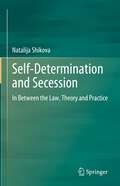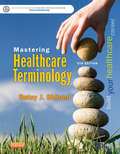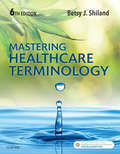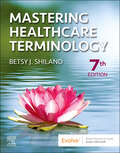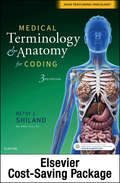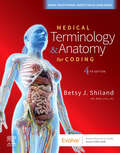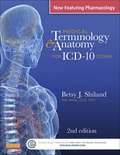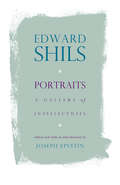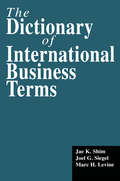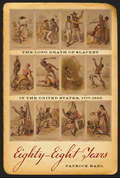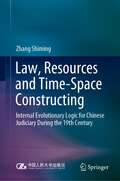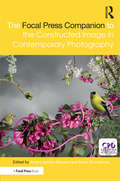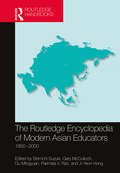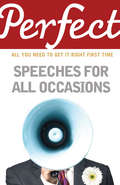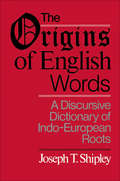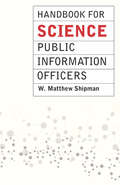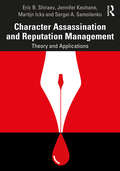- Table View
- List View
Self-Determination and Secession: In Between the Law, Theory and Practice
by Natalija ShikovaThis book offers a comprehensive summary of extant international law scholarship on the topics of self-determination and secession and positions the concepts among present-day theory and relevant practice, illustrated through various ongoing cases and historical examples. The right to self-determination is among the least understood rights within international law. Theoretical dilemmas – as to whether there is a link between self-determination and secession – are nothing new. In essence, self-determination is a much broader concept than secession and obtaining independent statehood. Unilateral secession is not prohibited by international law, but neither is it per se welcomed or accepted in practice. Beyond the context of decolonization, secession claims have long been viewed with disapproval in international law, and lawyers have been extremely skeptical about the issue. Although this is still the case, there are also new trends and opportunities to explore situations in which secession can be accepted, legitimized, or even legally permissible. The yardstick for this is the diplomatic response to secessionism and the growing involvement of the international community in mediation and conflict resolution. Though finding solutions can be difficult, within the existing frame, the ongoing tension between the duty of every society to recognize pluralism and diversity on the one hand, and the inherent desire of every culture – whether majority, minority or indigenous – to protect its values and ensure conformity on the other, must be resolved. The practices and modalities that envisage the internal dimension of the right to self-determination as a right that is exercised within the state borders can offer such opportunities. The appropriate role of the state and the international community is to serve as mediators between competing forces and to set parameters that can transform destructive conflicts into productive political models.
Mastering Healthcare Terminology - E-Book
by Betsy J. ShilandGain the knowledge of medical language you need to succeed in class and in your healthcare career! Mastering Healthcare Terminology, 5th Edition covers medical terms and definitions in small chunks — easy-to-follow learning segments — followed immediately by exercises and review questions that reinforce your understanding. From well-known educator Betsy Shiland, this book includes realistic case studies to help you apply your knowledge to practice. And because Shiland users love the case studies and medical records, more than 70 new case studies with review questions have been added to this edition, along with extra case studies on the Evolve companion website. Now with new mobile-optimized quizzes and flash cards that make it easy to study terms while on the go, this popular introduction to healthcare language enables you to communicate clearly and confidently with other members of the healthcare team.Quick-reference format makes it easier to learn terminology by presenting terms in tables — including word origin, definition, and pronunciation.Frequent word part and word building exercises reinforce your understanding with immediate opportunities for practice and review.A total of 460 illustrations includes additional new photos showing difficult terms and procedures.A breakdown of A&P terms appears in page margins next to the related text, helping you learn and memorize word parts in context.Convenient spiral binding lets the book lay flat, making it easy to work on exercises.UNIQUE! ICD-9 and ICD-10 codes are provided in the pathology terminology tables for a better understanding of medical coding.An Evolve companion website includes medical animations, audio pronunciations, an anatomy coloring book, electronic flash cards, and word games such as Wheel of Terminology, Terminology Triage, and Whack a Word Part.Coverage of electronic medical records prepares you for using EHR in the healthcare setting. NEW! 70 new case studies provide more opportunity to see terminology in use.NEW! Mobile-optimized quick quizzes and flash cards allow you to practice terminology while on the go.NEW terms and procedures keep you up to date with advances in healthcare.NEW Normal Lab Values appendix provides a quick reference as you work through case studies and medical reports.
Mastering Healthcare Terminology - E-Book
by Betsy J. ShilandMastering Healthcare Terminology - E-Book
Mastering Healthcare Terminology - E-Book
by Betsy J. ShilandMaster the terminology you need to communicate clearly and confidently in the healthcare setting! Using small learning segments or "chunks," Mastering Healthcare Terminology, 7th Edition makes it easy to learn medical terms and definitions. Concepts and terms are immediately followed by exercises to reinforce and assess your understanding. Organizing terminology by body system, the book covers prefixes, suffixes, and word roots, and realistic case studies help you apply your knowledge to practice. Special boxes help you avoid terminology pitfalls. Written by respected educator Betsy Shiland, this book includes an Evolve website with medical animations, flash cards, quizzes, word games, and more. Frequent word part and word building exercises reinforce your understanding with immediate opportunities for practice and review. Pathology and diagnostic terminology tables summarize the phonetic pronunciation of terms, word origin, and definitions. Case studies provide an opportunity to see terminology in use. Be Careful boxes remind you of potentially confusing look-alike or sound-alike word parts and terms. Age Matters boxes highlight important concepts and terminology for both pediatric and geriatric patients. Labeling exercises and hundreds of illustrations help you learn anatomy and the accompanying combining forms. Focus On boxes put it all together by highlighting a disorder or procedure that uses the medical terminology presented throughout the chapter. Coverage of electronic medical records prepares you for using EHR in the healthcare setting. Evolve website includes medical animations, electronic flash cards, quizzes, and word games such as Tournament of Terminology, Medical Millionaire, and Match the Word Part. NEW! Point of Interest boxes offer a complete picture of selected diseases and procedures. NEW gradable activities are added to the Evolve website for this edition. NEW terms and photos keep you up to date with advances in healthcare.
Medical Terminology & Anatomy for Coding - E-Book
by Betsy J. ShilandMedical Terminology and Anatomy for Coding, 3rd Edition is unlike any other medical terminology textbook on the market. By interspersing ICD-10 and CPT coding guidelines and notes, electronic medical records, and integrated exercises, it combines anatomy and physiology coverage with the latest medical terminology coders — and coding students — need. The ICD-10-CM classification system serves as the structure for organizing diseases and disorders, with carefully drawn, well-labeled illustrations to help you visualize the associated anatomy. A new Basics of Oncology appendix provides the terminology and physiology of neoplasms, and new CPT coding information indicates where physician coding differs from ICD-10 coding. The robust Evolve site includes games, activities, and animations to reinforce learning.UNIQUE! Medical terminology, anatomy and physiology specifically tailored to ICD-10-CM and ICD-10-PCS coding manuals supply you with an excellent foundation for learning the medical terminology related to coding.UNIQUE! A Body Part key provides a complete list of body parts and how they should be coded in ICD-10.UNIQUE! Pathology terms organized by ICD-10 disease and disorder categories let you learn terms in the same order they are presented in the coding manual.UNIQUE! Guideline Alert! and Special Notes boxes highlight relevant ICD-10 information. UNIQUE! Pharmacology in each body system and a Pharmacology Basics appendix help you recognize drugs and medications in medical reports.Procedural terms supply a more complete picture of the number and kind of procedures you will encounter on medical reports.UNIQUE! Normal Lab Values appendix familiarizes you with normal and abnormal lab values so you know when to search a medical record for possible additional diagnoses.UNIQUE! Root operation tables illustrate the root operations in PCS and their associated suffixes.Pathology and procedure terminology tables list the word parts for each term, along with the definition so you become familiar with prefixes, suffixes, and combining forms.Exercises interspersed throughout the text encourage you to practice and learn as you move through the material.Be Careful! boxes warn you about similar and potentially confusing word parts and medical terms.Electronic medical record format illustrates the appearance of electronic records now being used in many healthcare settings.
Medical Terminology & Anatomy for Coding E-Book
by Betsy J. ShilandNEW and UNIQUE! Infectious disease appendix provides the basic information coders and coding students need to be able to understand infectious diseases and to code them correctly. NEW and UNIQUE! Additional CPT notes and updated ICD-10 guidelines highlight connections between terminology and codes.
Medical Terminology & Anatomy for ICD-10 Coding - E-Book
by Betsy J. ShilandMedical Terminology and Anatomy for ICD-10 Coding integrates expanded anatomy, physiology, and pharmacology coverage with the latest medical terminology you need to correctly code in ICD-10. The ICD-10-CM classification system serves as the structure for organizing diseases and disorders, with carefully drawn, well-labeled illustrations to help you visualize the associated anatomy. ICD-10 coding guidelines and notes, along with electronic medical records and integrated exercises are interspersed throughout the text. A robust Evolve site includes games, activities, and animations to reinforce learning.Medical terminology specifically tailored to ICD-10-CM and ICD-10-PCS guidelines supply you with an excellent foundation for learning the medical terminology related to ICD-10-CM.Learn all the anatomy and physiology necessary to be able to understand medical reports and code accurately in ICD-10-CM/PCS.Pathology terms organized by ICD-10 disease and disorder categories let you learn terms in the same order they are presented in the coding manual.Guideline Alert! boxes highlight ICD-10-PCS coding information when relevant to medical terminology.Special Notes boxes present ICD-10 features that affect your understanding of the terminology presented.Root operation tables illustrate the root operations in PCS and their associated suffixes.Body Part key provides a complete list of body parts and how they should be coded in ICD-10.Pathology and procedure terminology tables list the word parts for each term, along with the definition so you become familiar with prefixes, suffixes, and combining forms.Exercises interspersed throughout the text encourage you to practice and learn as you move through the material.Be Careful! boxes warn you about similar and potentially confusing word parts and medical terms.Games and activities on accompanying Evolve website offer an easily accessible source for extra interactive practice and learning.Electronic medical record format illustrates the appearance of electronic records now being used in many healthcare settings.NEW! Pharmacology in each body system and a Pharmacology Basics appendix help you recognize drugs and medications in medical reports.NEW! More than 50 new images bring terminology to life.NEW! Additional procedural terms supply a more complete picture of the number and kind of procedures you will encounter on medical reports.NEW! Normal Lab Values appendix familiarizes you with normal and abnormal lab values so you know when to search a medical record for possible additional diagnoses.NEW! Tablet and mobile-optimized Evolve activities offer an easily accessible source for extra interactive practice and learning.
Portraits: A Gallery of Intellectuals
by Edward ShilsIn these vivid portraits of prominent twentieth-century intellectuals, Edward Shils couples the sensitivity of a biographer with the profound knowledge of a highly respected scholar. Ranging as widely across various disciplines as Shils himself did, the essays gathered here share a distaste for faddists who "run with the intellectual mob" and a deep respect for intellectuals who maintain their integrity under great pressure. Highlights include an affectionate treatment of Leo Szilard, the physicist whose involvement with the development of the atomic bomb led him to work ceaselessly to address its social consequences; a discussion of the educational philosophy of Robert Maynard Hutchins, the University of Chicago's fifth and most controversial president; an appreciative account of the Polish emigré Leopold Labedz's well-informed and outspoken resistance to Communism; and an essay about the extraordinary Indian writer Nirad Chaudhuri. Many of these essays have appeared in The American Scholar, edited by Joseph Epstein, who introduces this volume with his own portrait of Edward Shils. "Though professionally a sociologist, Edward Shils was a man of wide cosmopolitan culture and experience, greatly concerned with the public problems of his time: in particular with those created by the rise of new and dangerous ideologies, the frightening possibilities of science, and the apparent abrogation of public responsibility by many Western intellectuals."—Hugh Trevor-Roper The late Edward Shils was a member of the University of Chicago's Committee on Social Thought for forty-five years and a fellow of Peterhouse, Cambridge University. His many books include The Calling of Sociology and The Intellectuals and the Powers, both published by the University of Chicago Press.
The Dictionary of International Business Terms (Glenlake Business Reference Bks.)
by Jae K. Shim Joel G. Siegel Marc H. LevineFirst Published in 1998. Routledge is an imprint of Taylor & Francis, an informa company.
The Dictionary of International Business Terms
by Jae K. Shim Joel G. Siegel Marc H. LevineFirst Published in 1998. Routledge is an imprint of Taylor & Francis, an informa company.
Photographic Guide to the Birds of Japan and North-east Asia
by Tadao ShimbaEastern Asia is blessed with a rich and spectacular avifauna, and all 520 regularly occurring species are featured in this spectacular and lavish new photographic guide to the region, covering Japan, northern China, North and South Korea and the Russian Far East. The concise text focuses on key identification criteria, and is accompanied by a distribution map for every species. The accompanying photographs, contributed by Japan's top bird photographers, form a stunning series that will allow both field identification and rich enjoyment at home afterwards. This beautiful book is a must-have for anyone interested in the birds of Asia.
Photographic Guide to the Birds of Japan and North-east Asia: Improvisation And The Theatre (Bloomsbury Revelations Ser.)
by Tadao ShimbaEastern Asia is blessed with a rich and spectacular avifauna, and all 520 regularly occurring species are featured in this spectacular and lavish new photographic guide to the region, covering Japan, northern China, North and South Korea and the Russian Far East. The concise text focuses on key identification criteria, and is accompanied by a distribution map for every species. The accompanying photographs, contributed by Japan's top bird photographers, form a stunning series that will allow both field identification and rich enjoyment at home afterwards. This beautiful book is a must-have for anyone interested in the birds of Asia.
Law, Resources and Time-Space Constructing: Internal Evolutionary Logic for Chinese Judiciary During the 19th Century
by Zhang ShimingThis book studies the judicial evolution of the Qing Dynasty. It sums up the changes from six major aspects: 1. Banfang(班房)emerged in the late Qianlong period; 2. The opening of capital appeals(京控)early in Jiaqing’s reign; 3. The consular jurisdiction was established during Daoguang’s reign; 4. The execution on the spot (就地正法)was started in Daoguang and Xianfeng periods; 5. The introduction of fashenju (发审局,a interrogatory court) happened during Tongzhi’s reign; 6. Late in Guangxu’s reign, banishment was abolished, and reforms were made for prisons. In the past, people did not have a comprehensive understanding of these big changes. From the perspective of legal culture, scholars often criticize traditional Chinese law focuses on criminal law while ignores civil law in terms of legal culture, but this situation can be explained in part by the inadequate allocation of resources and authoritarian resources in traditional societies. Using a large number of archives and precious materials such as private notes that were not noticed by academics in the past, this book adopts the research path of new historical jurisprudence to explore the inner logic of judicial evolution in the Qing Dynasty, focusing on the triangular connection between legal rules, resources, and temporal and spatial constructions, which is an important contribution to the study of traditional Chinese law.
The Focal Press Companion to the Constructed Image in Contemporary Photography
by Marni Shindelman Anne Leighton MassoniThis compendium examines the choices, construction, inclusions and exemptions, and expanded practices involved in the process of creating a photograph. Focusing on work created in the past twenty-five years, this volume is divided into sections that address a separate means of creating photographs as careful constructs: Directing Spaces, Constructing Places, Performing Space, Building Images, and Camera-less Images. Introduced by both a curator and a scholar, each section features contemporary artists in conversation with curators, critics, gallerists, artists, and art historians. The writings include narratives by the artist, writings on their work, and examinations of studio practices. This pioneering book is the first of its kind to explore this topic beyond those artists building sets to photograph.
The Routledge Encyclopedia of Modern Asian Educators: 1850–2000
by Shin’ichi Suzuki; Gary McCulloch; Gu Mingyuan; Parimala V. Rao; Ji-Yeon HongThis handbook is a unique and major resource on modern educators of Asia and their contribution to Asian educational development through the 19th and 20th centuries when modernization started in Asia. In one comprehensive volume, this handbook covers a selection of modern educators from East Asia, South Asia, and Southeast Asia – and their contributions to the development of modern education, practically and theoretically. The diversity of cultures and religion as well as the multilinguistic and ethnic context have made Asian modernization unique and complex. Educational modernization in Asia reflected this historical context in many ways and resulted in the diverse forms of learning, teaching, institutions, and administration. Modern Asian educators compiled in this handbook represent various fields of Asian society: not only educational but cultural and social fields like academia, politics, economics, religion, literature, theatre, fine arts, and civic genres including the media. Through this Handbook, readers may discover the individual modern educators, male and female, and their contributions to Asian educational modernization. All of them were committed to the cause of education for children, youth, adults and in particular women. In addition, this volume has an extraordinarily rich subject index which can be an excellent guide and introduction to information touching divergent dynamics of educational developments in modern Asia. This insightful volume is perfect for students and researchers working on history of education, comparative education and educational development, particularly for those interested in Asian contexts.
Perfect Speeches for All Occasions (The\perfect Ser.)
by Matt ShinnHave you been asked to give a speech?Are you worried your nerves will get the better of you?Do you need some tips on how to deliver your message clearly and effectively?Perfect Speeches for All Occasions is an indispensable guide for anyone who has to give a talk or presentation. Written by Matt Shinn, a professional speech writer with years of experience in the field, it explains how to structure your speech so that it has the most impact and gives practical advice about controlling your nerves on the big day. Whether you're been asked to say a few words at a party or need to put together a high-level presentation, Perfect Speeches for All Occasions has all you need to make sure you perform with style and confidence.The Perfect series is a range of practical guides that give clear and straightforward advice on everything from getting your first job to choosing your baby's name. Written by experienced authors offering tried-and-tested tips, each book contains all you need to get it right first time.
The Origins of English Words: A Discursive Dictionary of Indo-European Roots
by Joseph Twadell ShipleyThere are no direct records of the original Indo-European speech. By comparing the vocabularies of its various descendants, however, it is possible to reconstruct the basic Indo-European roots with considerable confidence. In The Origins of English Words, Shipley catalogues these proposed roots and follows the often devious, always fascinating, process by which some of their offshoots have grown.Anecdotal, eclectic, and always enthusiastic, The Origins of English Words is a diverting expedition beyond linguistics into literature, history, folklore, anthropology, philosophy, and science.
Handbook for Science Public Information Officers (Chicago Guides to Writing, Editing, and Publishing)
by W. Matthew ShipmanWhether sharing a spectacular shot from a deep-space probe, announcing a development in genetic engineering, or crafting an easy-to-reference list of cancer risk factors, science public information officers, or PIOs, serve as scientific liaisons, connecting academic, nonprofit, government, and other research organizations with the public. And as traditional media outlets cut back on their science coverage, PIOs are becoming a vital source for science news. W. Matthew Shipman’s Handbook for Science Public Information Officers covers all aspects of communication strategy and tactics for members of this growing specialty. It includes how to pitch a story, how to train researchers to navigate interviews, how to use social media effectively, and how to respond to a crisis. The handbook offers a wealth of practical advice while teaching science PIOs how to think critically about what they do and how they do it, so that they will be prepared to take advantage of any situation, rather than being overwhelmed by it. For all science communicators—whether they’re starting their careers, crossing over from journalism or the research community, or professional communicators looking to hone their PIO skills—Shipman’s Handbook for Science Public Information Officers will become their go-to reference.
Handbook for Science Public Information Officers (Chicago Guides to Writing, Editing, and Publishing)
by W. Matthew ShipmanWhether sharing a spectacular shot from a deep-space probe, announcing a development in genetic engineering, or crafting an easy-to-reference list of cancer risk factors, science public information officers, or PIOs, serve as scientific liaisons, connecting academic, nonprofit, government, and other research organizations with the public. And as traditional media outlets cut back on their science coverage, PIOs are becoming a vital source for science news. W. Matthew Shipman’s Handbook for Science Public Information Officers covers all aspects of communication strategy and tactics for members of this growing specialty. It includes how to pitch a story, how to train researchers to navigate interviews, how to use social media effectively, and how to respond to a crisis. The handbook offers a wealth of practical advice while teaching science PIOs how to think critically about what they do and how they do it, so that they will be prepared to take advantage of any situation, rather than being overwhelmed by it. For all science communicators—whether they’re starting their careers, crossing over from journalism or the research community, or professional communicators looking to hone their PIO skills—Shipman’s Handbook for Science Public Information Officers will become their go-to reference.
Handbook for Science Public Information Officers (Chicago Guides to Writing, Editing, and Publishing)
by W. Matthew ShipmanWhether sharing a spectacular shot from a deep-space probe, announcing a development in genetic engineering, or crafting an easy-to-reference list of cancer risk factors, science public information officers, or PIOs, serve as scientific liaisons, connecting academic, nonprofit, government, and other research organizations with the public. And as traditional media outlets cut back on their science coverage, PIOs are becoming a vital source for science news. W. Matthew Shipman’s Handbook for Science Public Information Officers covers all aspects of communication strategy and tactics for members of this growing specialty. It includes how to pitch a story, how to train researchers to navigate interviews, how to use social media effectively, and how to respond to a crisis. The handbook offers a wealth of practical advice while teaching science PIOs how to think critically about what they do and how they do it, so that they will be prepared to take advantage of any situation, rather than being overwhelmed by it. For all science communicators—whether they’re starting their careers, crossing over from journalism or the research community, or professional communicators looking to hone their PIO skills—Shipman’s Handbook for Science Public Information Officers will become their go-to reference.
Handbook for Science Public Information Officers (Chicago Guides to Writing, Editing, and Publishing)
by W. Matthew ShipmanWhether sharing a spectacular shot from a deep-space probe, announcing a development in genetic engineering, or crafting an easy-to-reference list of cancer risk factors, science public information officers, or PIOs, serve as scientific liaisons, connecting academic, nonprofit, government, and other research organizations with the public. And as traditional media outlets cut back on their science coverage, PIOs are becoming a vital source for science news. W. Matthew Shipman’s Handbook for Science Public Information Officers covers all aspects of communication strategy and tactics for members of this growing specialty. It includes how to pitch a story, how to train researchers to navigate interviews, how to use social media effectively, and how to respond to a crisis. The handbook offers a wealth of practical advice while teaching science PIOs how to think critically about what they do and how they do it, so that they will be prepared to take advantage of any situation, rather than being overwhelmed by it. For all science communicators—whether they’re starting their careers, crossing over from journalism or the research community, or professional communicators looking to hone their PIO skills—Shipman’s Handbook for Science Public Information Officers will become their go-to reference.
Handbook for Science Public Information Officers (Chicago Guides to Writing, Editing, and Publishing)
by W. Matthew ShipmanWhether sharing a spectacular shot from a deep-space probe, announcing a development in genetic engineering, or crafting an easy-to-reference list of cancer risk factors, science public information officers, or PIOs, serve as scientific liaisons, connecting academic, nonprofit, government, and other research organizations with the public. And as traditional media outlets cut back on their science coverage, PIOs are becoming a vital source for science news. W. Matthew Shipman’s Handbook for Science Public Information Officers covers all aspects of communication strategy and tactics for members of this growing specialty. It includes how to pitch a story, how to train researchers to navigate interviews, how to use social media effectively, and how to respond to a crisis. The handbook offers a wealth of practical advice while teaching science PIOs how to think critically about what they do and how they do it, so that they will be prepared to take advantage of any situation, rather than being overwhelmed by it. For all science communicators—whether they’re starting their careers, crossing over from journalism or the research community, or professional communicators looking to hone their PIO skills—Shipman’s Handbook for Science Public Information Officers will become their go-to reference.
Handbook for Science Public Information Officers (Chicago Guides to Writing, Editing, and Publishing)
by W. Matthew ShipmanWhether sharing a spectacular shot from a deep-space probe, announcing a development in genetic engineering, or crafting an easy-to-reference list of cancer risk factors, science public information officers, or PIOs, serve as scientific liaisons, connecting academic, nonprofit, government, and other research organizations with the public. And as traditional media outlets cut back on their science coverage, PIOs are becoming a vital source for science news. W. Matthew Shipman’s Handbook for Science Public Information Officers covers all aspects of communication strategy and tactics for members of this growing specialty. It includes how to pitch a story, how to train researchers to navigate interviews, how to use social media effectively, and how to respond to a crisis. The handbook offers a wealth of practical advice while teaching science PIOs how to think critically about what they do and how they do it, so that they will be prepared to take advantage of any situation, rather than being overwhelmed by it. For all science communicators—whether they’re starting their careers, crossing over from journalism or the research community, or professional communicators looking to hone their PIO skills—Shipman’s Handbook for Science Public Information Officers will become their go-to reference.
Character Assassination and Reputation Management: Theory and Applications
by Eric B. Shiraev Jennifer Keohane Martijn Icks Sergei A. SamoilenkoThis lively book offers the first comprehensive examination of character assassination. In modern politics as well as in historical times, character attacks abound. Words and images, like psychological weapons, have sullied or destroyed numerous individual reputations. How does character assassination "work" and when or why does it not? Are character attacks getting worse in the age of social media? Why do many people fail when they are under character attack? How should they prevent attacks and defend against them? Moving beyond discussions about corporate reputation management and public relations canons, Character Assassination and Reputation Management is designed to help understand, critically analyze, and effectively defend against such attacks. Written by an international and interdisciplinary team of experts, the book begins with a discussion of theoretical and applied features of the "five pillars" of character assassination: (1) the attacker, (2) the target, (3) the media, (4) the audience, and (5) the context. The remaining chapters present engaging in-depth discussions and case studies suitable for homework and class discussion. These cases include: Historic figures Leaders from modern times Women in politics U.S. presidents World leaders Political autocrats Democratic leaders Scientists Celebrities Featuring an extensive glossary of key terms, critical thinking exercises, and summaries to encourage problem-based learning, Character Assassination and Reputation Management will prove invaluable to the undergraduate and postgraduate students in communication, political science, global affairs, history, sociology, and psychology departments.
Character Assassination and Reputation Management: Theory and Applications
by Eric B. Shiraev Jennifer Keohane Martijn Icks Sergei A. SamoilenkoThis lively book offers the first comprehensive examination of character assassination. In modern politics as well as in historical times, character attacks abound. Words and images, like psychological weapons, have sullied or destroyed numerous individual reputations. How does character assassination "work" and when or why does it not? Are character attacks getting worse in the age of social media? Why do many people fail when they are under character attack? How should they prevent attacks and defend against them? Moving beyond discussions about corporate reputation management and public relations canons, Character Assassination and Reputation Management is designed to help understand, critically analyze, and effectively defend against such attacks. Written by an international and interdisciplinary team of experts, the book begins with a discussion of theoretical and applied features of the "five pillars" of character assassination: (1) the attacker, (2) the target, (3) the media, (4) the audience, and (5) the context. The remaining chapters present engaging in-depth discussions and case studies suitable for homework and class discussion. These cases include: Historic figures Leaders from modern times Women in politics U.S. presidents World leaders Political autocrats Democratic leaders Scientists Celebrities Featuring an extensive glossary of key terms, critical thinking exercises, and summaries to encourage problem-based learning, Character Assassination and Reputation Management will prove invaluable to the undergraduate and postgraduate students in communication, political science, global affairs, history, sociology, and psychology departments.
